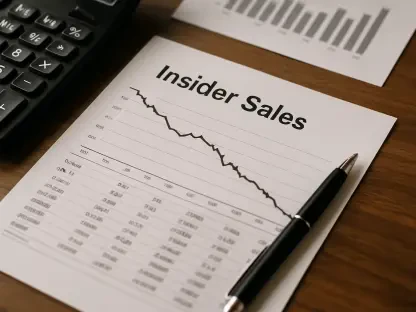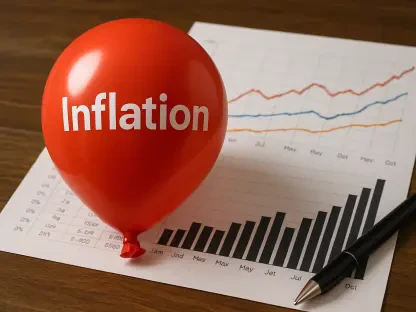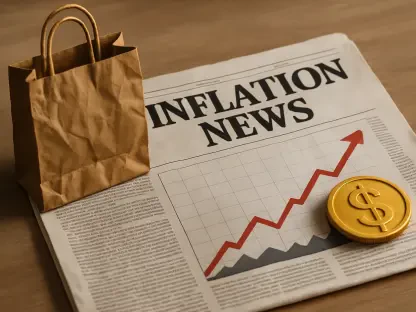The housing market across the United States has encountered an unexpected challenge this year, as the anticipated surge in inventory growth has significantly decelerated, casting a shadow over earlier projections of a robust expansion that many had hoped would stabilize prices and improve affordability. Recent data reveals a stark decline in year-over-year inventory growth, plummeting from a promising 33% earlier in the year to a modest 17.66% based on the latest figures. This abrupt shift has sparked curiosity and concern among homeowners, prospective buyers, and industry analysts alike, prompting a deeper investigation into the underlying forces reshaping the real estate landscape. Beyond the raw numbers, this trend hints at broader systemic changes influenced by a mix of seasonal patterns, economic conditions, and shifting behaviors among buyers and sellers. Understanding these dynamics is essential for anyone navigating the current market, whether planning to buy, sell, or simply stay informed. This analysis aims to unpack the critical reasons behind the slowdown, focusing on key metrics such as new listings, mortgage rates, and demand shifts, while shedding light on what this means for the future of housing.
Unforeseen Seasonal Shifts and Early Inventory Peaks
The trajectory of housing inventory growth this year has been disrupted by an unusual pattern, with growth peaking far earlier than historical norms would suggest. Typically, inventory levels continue to climb into late summer before tapering off, but in 2025, the numbers stabilized much sooner, showing only a marginal increase from 862,575 to 863,972 in early October, compared to a smaller uptick during the same period in 2024. This premature plateau marks a significant deviation from expected seasonal trends, where late summer often brings a final push of new homes onto the market. Instead, the early onset of a seasonal decline has caught many off guard, acting as a primary catalyst for the stagnation in inventory accumulation. This shift not only limits the total number of available homes but also alters the rhythm of the market, forcing buyers and sellers to adjust their strategies in a compressed timeframe.
Moreover, the implications of this early peak extend beyond mere numbers, affecting market confidence and planning. With inventory failing to build as anticipated during what should have been peak months, real estate professionals are reevaluating forecasts and preparing for a potentially tighter market in the coming months. The absence of sustained growth into August, a period historically associated with robust activity, suggests that external pressures or structural changes may be at play beyond typical cyclical behavior. This unexpected timing has also coincided with other market indicators, such as declining new listings, creating a compounded effect on supply levels. As a result, the housing sector faces a scenario where the window for inventory expansion has narrowed, leaving less room for the market to balance itself against rising demand or economic fluctuations. This early ceiling on growth underscores the need for a closer look at other contributing factors driving this slowdown.
Supply Bottlenecks and Declining New Listings
A critical driver behind the slowing inventory growth is the marked decline in new listings following an early high point this year. On May 23, 2025, new listings reached a peak of 83,143, a figure that initially seemed promising but quickly fell short of sustaining momentum through the peak season, where numbers typically range between 80,000 and 100,000. Recent data shows a drop to just 64,328 new listings in the latest week, only slightly above the comparable period in 2024. This reduction in fresh supply has created a bottleneck, directly curbing the ability of the market to expand its inventory base. Compared to historical benchmarks, such as the housing bubble years when weekly new listings soared between 250,000 and 400,000, the current levels appear strikingly subdued, highlighting a significant constraint on market dynamics.
Additionally, the decline in new listings reflects broader hesitancy within the market, potentially tied to economic signals or seller confidence. When new homes fail to enter the market at a steady pace, the ripple effect impacts everything from buyer options to pricing stability, often leading to increased competition for the limited available properties. This scarcity of new supply is particularly concerning given the timing, as the market missed the opportunity to build momentum during traditionally strong months. Analysts note that this trend could signal a longer-term challenge if the inflow of listings doesn’t recover in the near future, potentially exacerbating inventory shortages. The contrast with past booms further emphasizes how structural or cyclical shifts may be limiting the market’s capacity to grow, pushing stakeholders to adapt to a landscape where supply constraints are a defining feature of the current environment.
Seller Caution and Increasing Price Adjustments
Seller behavior has emerged as a pivotal factor in the current inventory slowdown, with many opting to withdraw their listings when faced with unmet price expectations. Since mid-June, a noticeable number of sellers have pulled back, likely discouraged by high mortgage rates that complicate the prospect of selling one home and purchasing another in the same market. This reluctance to engage in dual transactions has slowed the flow of homes into the inventory pool, tightening supply at a time when growth is already faltering. The data reflects this caution, as the percentage of homes with price cuts has risen to 41.8% in 2025, up from 39% in 2024, indicating a market where sellers are increasingly forced to adjust their expectations to attract buyers amid softening demand signals.
Furthermore, the rise in price reductions points to a broader recalibration within the housing sector, where sellers are grappling with a less favorable environment than anticipated. This trend aligns with a conservative forecast of home price growth at just 1.77% for the year, a sharp decline from the 4% increase seen in 2024, driven by improved demand and falling rates in the prior period. The growing prevalence of price cuts suggests that inventory levels, combined with economic pressures, are pushing sellers to compete more aggressively for buyer interest. This shift not only impacts individual transactions but also shapes overall market sentiment, as persistent price adjustments can signal weakness to potential buyers and investors. As sellers navigate these challenges, their decisions continue to play a crucial role in determining how much inventory remains available, further complicating efforts to reverse the slowdown.
Mortgage Rate Impacts and Rising Buyer Demand
Mortgage rates have proven to be a significant variable in shaping the housing market this year, with recent declines sparking a notable resurgence in buyer activity. Rates have edged down to 6.34% in the latest week and have remained below the key threshold of 6.64% for nine consecutive weeks, a trend that has fueled a 16% year-over-year increase in purchase applications. The past nine weeks have recorded the strongest demand of the year, as lower rates enhance affordability and draw more buyers into the market. However, this surge in demand has a dual effect, as it accelerates the absorption of existing inventory, leaving fewer homes available and contributing to the overall slowdown in inventory growth despite the positive momentum on the buyer side.
In addition to rate declines, improvements in mortgage spreads have bolstered affordability, further driving demand. Spreads have tightened to within 0.35% of normal historical levels, a development that could potentially lower rates to between 5.75% and 5.95% if fully normalized, offering even greater stimulus to buyer activity. Yet, this heightened demand places additional pressure on an already constrained supply, as homes are snapped up more quickly than new ones are listed. The interplay between lower rates and faster inventory turnover highlights a market caught in a delicate balance, where positive affordability trends inadvertently exacerbate supply shortages. As demand continues to outpace the addition of new homes, the challenge of rebuilding inventory levels becomes more pronounced, necessitating careful monitoring of rate trends and their broader impact on market dynamics.
Economic Uncertainties and External Influences
The housing market is also contending with external pressures that add layers of uncertainty to the inventory slowdown. A notable concern is the ongoing government shutdown, which has disrupted the release of critical economic data such as inflation reports and jobless claims, potentially delaying closings and obscuring clear market signals. Without access to these key indicators, stakeholders face challenges in making informed decisions, as the lack of transparency can stall transactions and dampen confidence. The resolution of this shutdown, along with upcoming Federal Reserve speeches and bond auctions, will likely play a decisive role in shaping short-term sentiment and could either alleviate or intensify the current inventory constraints depending on the outcomes.
Beyond governmental disruptions, broader economic conditions continue to influence the housing landscape in subtle but impactful ways. Fluctuations in the 10-year yield, currently at 4.12% within an expected range of 3.80% to 4.70%, tie directly to mortgage rate movements and, by extension, buyer behavior. These external factors create a complex backdrop against which the housing market must operate, often amplifying existing challenges like supply shortages and seller hesitancy. As these uncertainties linger, their potential to affect transaction timelines and market stability remains a concern, particularly for a sector already grappling with internal pressures. Keeping a close eye on how these external elements evolve will be essential for anticipating whether the inventory slowdown represents a temporary hiccup or a more enduring shift in the real estate environment.
Navigating the Path Ahead for Housing Markets
Reflecting on the inventory slowdown witnessed throughout 2025, it becomes evident that a confluence of factors—ranging from early seasonal peaks to seller caution and economic disruptions—played a substantial role in curbing growth. The decline in new listings after an early high, coupled with a surge in buyer demand driven by favorable mortgage rates, painted a picture of a market struggling to balance supply and demand. Meanwhile, external uncertainties like the government shutdown added further complexity, often stalling progress and clouding market clarity. Despite these challenges, year-over-year growth in inventory and purchase applications signaled resilience, suggesting that the market was adapting rather than collapsing under pressure.
Looking forward, stakeholders must focus on actionable strategies to address the inventory constraints that defined this period. Monitoring mortgage rate trends and advocating for policies that encourage new listings could help rebuild supply over time. Additionally, resolving external disruptions swiftly will be vital to restoring market transparency and facilitating smoother transactions. As the housing sector moves into the next phase, collaboration between industry players, policymakers, and economic bodies will be key to ensuring that supply growth aligns with demand, preventing prolonged shortages. This evolving landscape demands vigilance and adaptability, offering a chance to turn past challenges into future opportunities for a more balanced real estate market.









